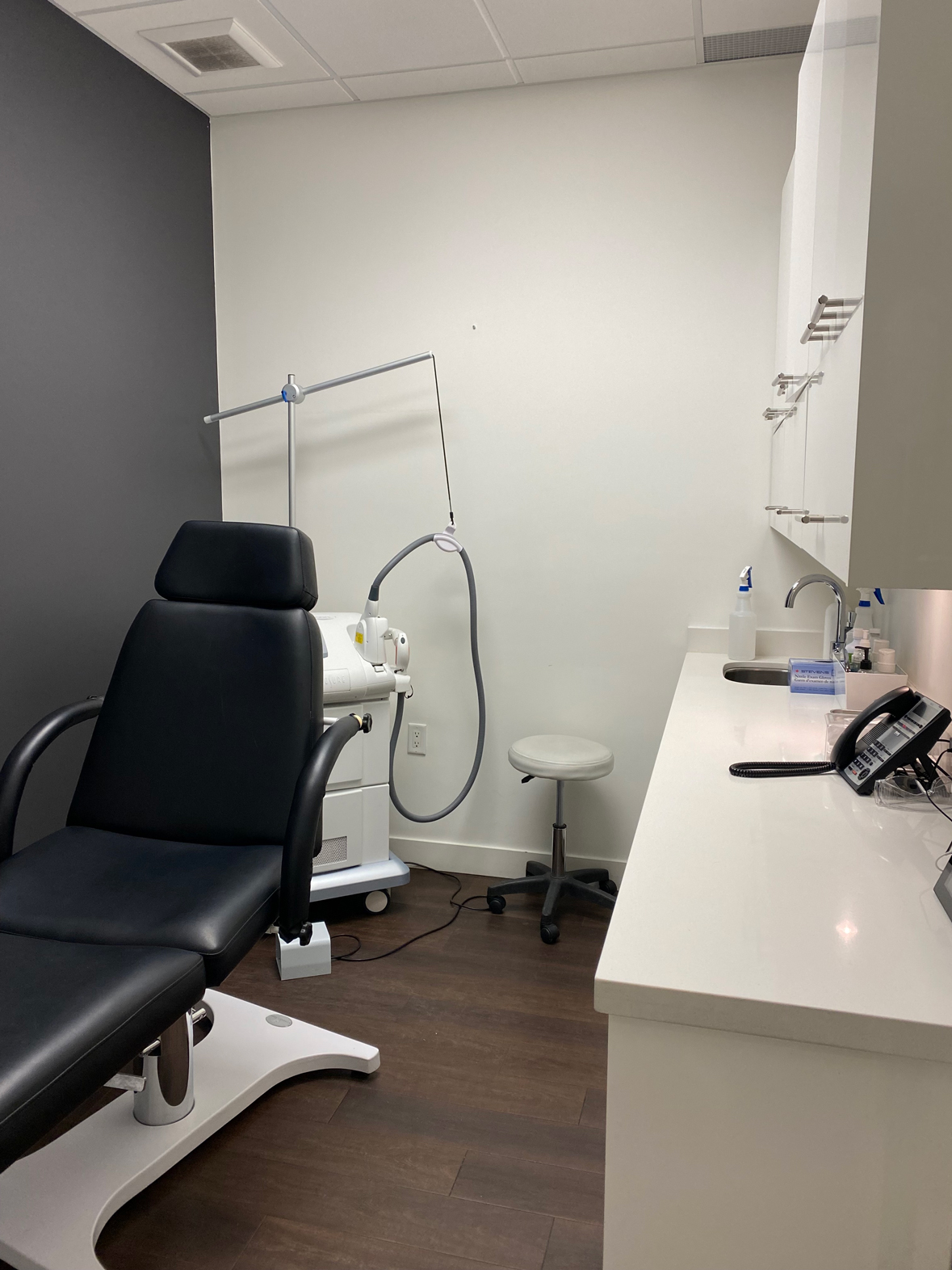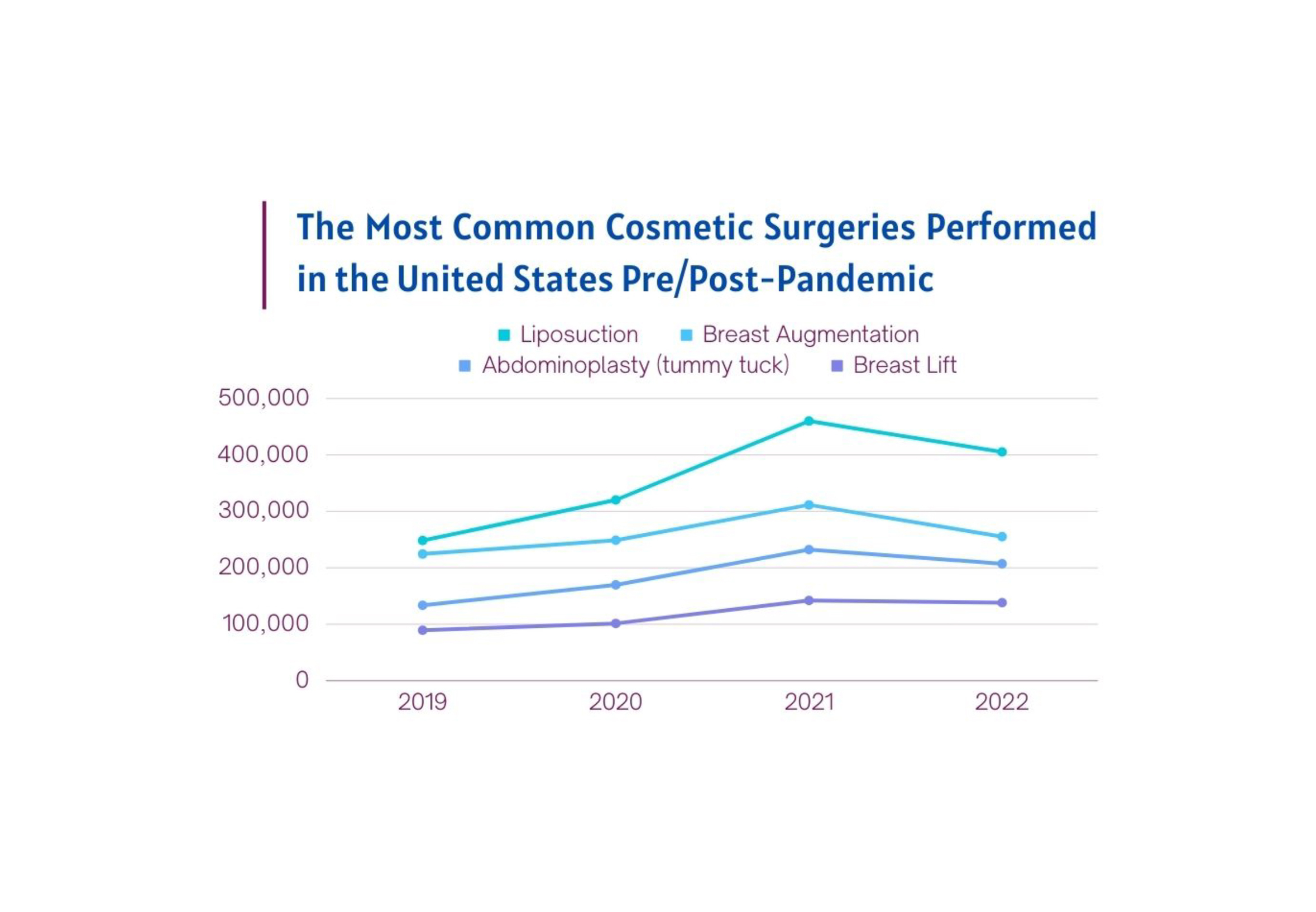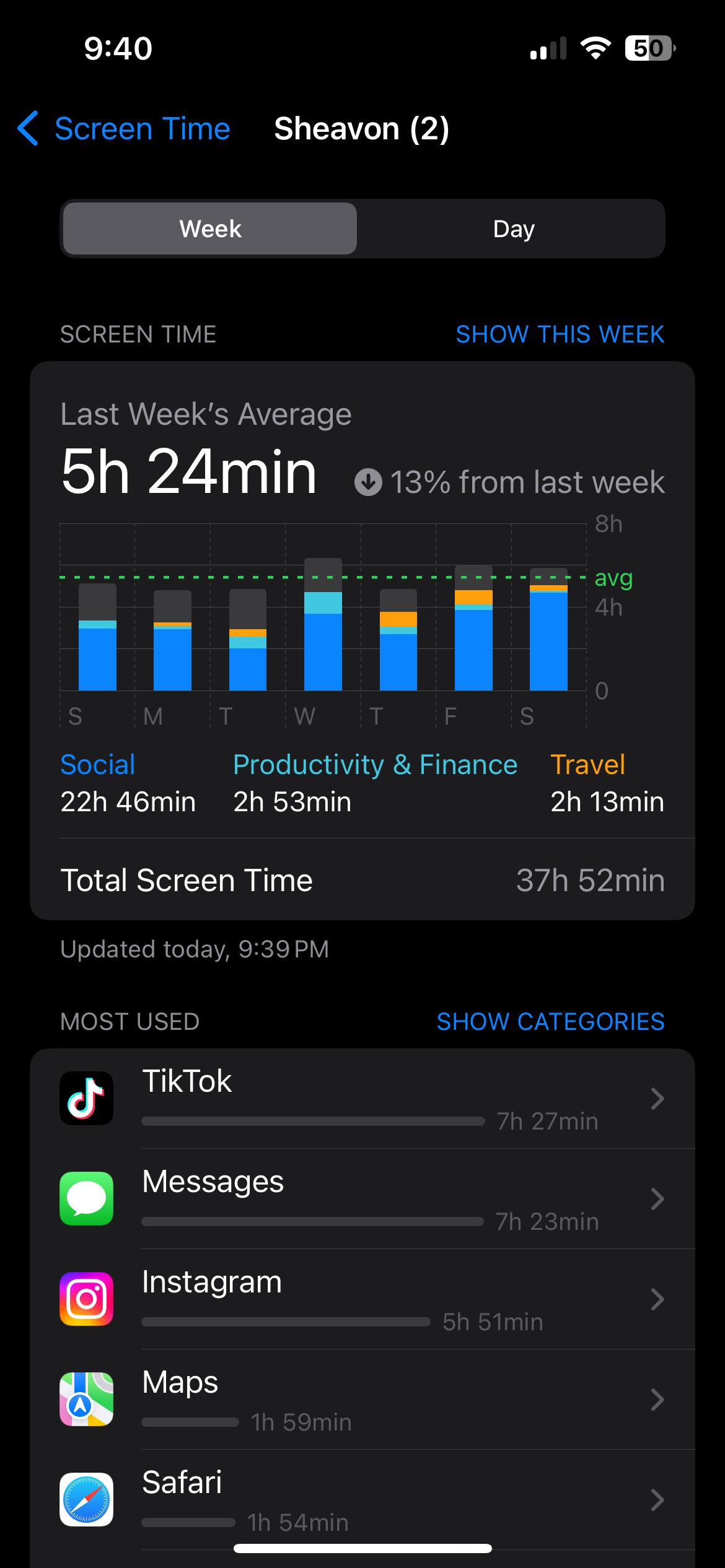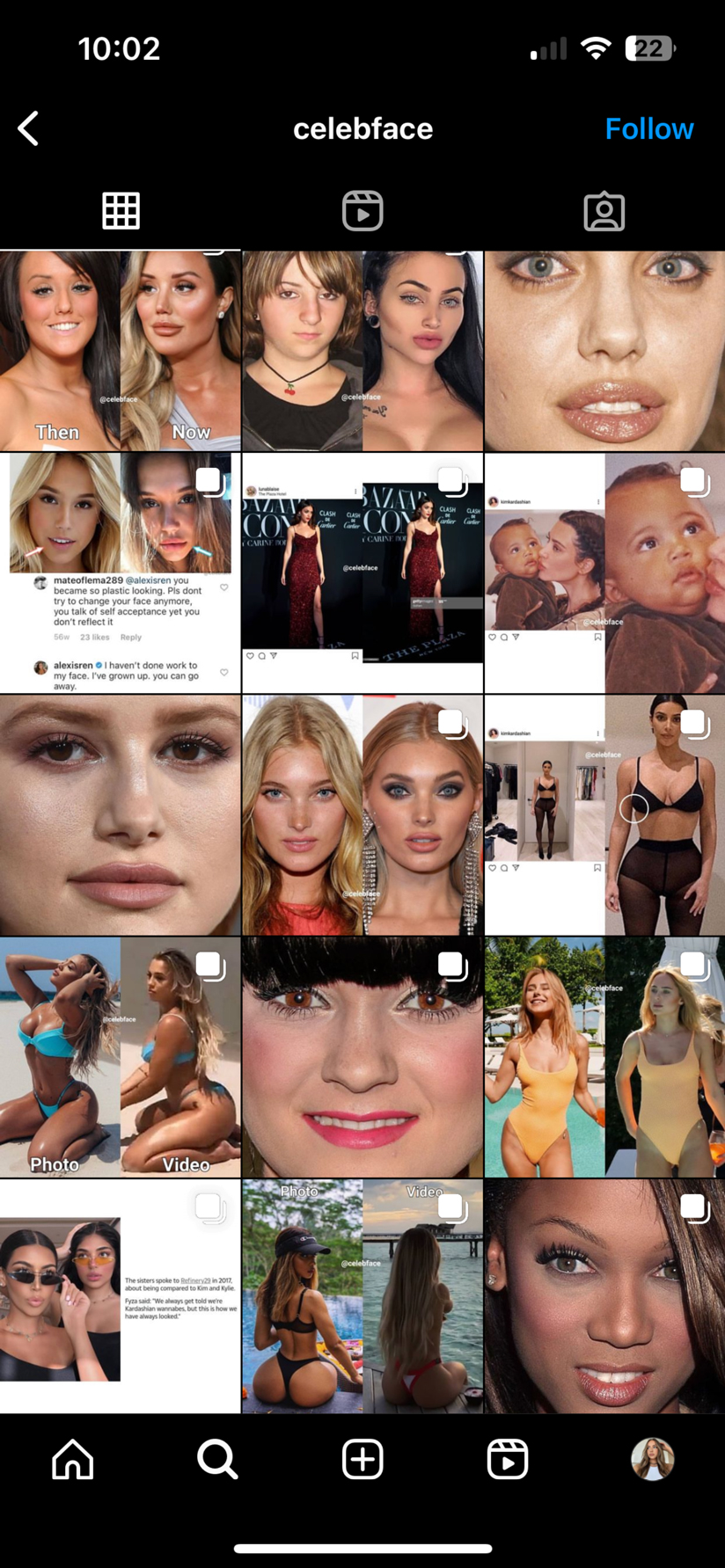
Sheavon McDougall
Sheavon McDougall is a fourth-year student completing a Bachelor of Business Administration at Capilano University by 2024. Concentrating in Financial Planning and Marketing, she has a strong eye for creative professionalism and analytical skills. Following graduation, she intends to continue a career in corporate finance or social media marketing. She has always been passionate about the beauty industry and having creative outlets. Through this, she inspires to attain her future goal in becoming a business owner within the beauty realm.
Moving further into the New Media Age, our self-perception has evolved from mirrored reflections in glass to screens illustrating a filtered, unattainable, idealized beauty that many seek and go to extreme lengths to achieve. This is where plastic surgery emerges as a transformative tool for individuals to reach their perfect desired look. While the common narrative often links cosmetic surgery to personal dissatisfaction with appearance and although this plays a motivating role, the rising concern lies in the influence of social media in setting the stage for unrealistic beauty desires. While plastic surgery has become more prevalent and accepted, there are ongoing discussions about its ethical implications, potential risks, and psychological impacts. As plastic surgery advances and continues to influence our perspective of aesthetic ideals, the consequential weight on mental health becomes progressively apparent. This study contends that individuals who choose to undergo plastic surgery are increasingly influenced by continuous exposure to photoshopped images and impractical beauty norms on social media. This distinction highlights the need to identify key solutions for younger generations in learning about the risks associated with social media use.
Current Context
The beginning of cosmetic surgery originated in 800 B.C. in ancient India where physicians used skin grafts for reconstructive surgeries. Eventually, plastic surgery advances were slowly coming into European countries. The practice of reconstructive surgery continued through the Middle Ages, but advances stopped due to the fall of Rome and the spread of Christianity because surgery, in any form, was prohibited by Church law. During the Renaissance, more advances began in science and technology, resulting in safer and more effective surgical techniques. The 20th century was when the next major advances occurred due to the high demand from war casualties, which had made reconstructive surgery a necessity for many soldiers; WWI brought plastic surgery to a new level within the medical establishment. In 1907, a plastic surgeon named Dr. Charles Miller wrote the first textbook related to cosmetic surgery, titled The Correction of Featural Imperfections. Despite being the first text and ahead of its time, it was widely criticized and discredited as “quackery” — a term used to describe someone with fraudulent and dishonest knowledge of medical skill. It wasn’t until a few generations later that the medical community and society viewed cosmetic surgeons as qualified and reputable healthcare professionals. In the 1950s, plastic surgery became fully integrated into the medical field and the modern history of plastic surgery truly began to flourish in the 60s and 70s. By the 1980s, there was significant effort from plastic surgeons and advocates of plastic surgery to enhance public awareness and improve the perception of these procedures. The surge in available information to consumers, alongside the economic prosperity of the 80s, notably contributed to making plastic surgery more accessible to Americans and paved the way for mainstream acceptance as a viable option for aesthetic enhancements (Kita, 2020).

An image of a clinic room where clients go to receive minimally invasive cosmetic procedures.
From 2002 to 2010 there were over 440,000 annual visits for neurotoxin, also known as Botox, Dysport, and Xeomin (Sandoval et al., 2014). Currently, the demand for noninvasive and nonsurgical cosmetic procedures is on the rise. To compare, it’s estimated that in 2022, the U.S. administered over 3.9 million Botox injections and these numbers are continuously growing (Yang, 2023). The following percentages are derived from statistics performed by the American Society of Plastic Surgeons (ASPS): post-pandemic, lip augmentation with filler became among the top five most sought-after minimally invasive cosmetic treatments, facelift procedures grew 8%, dermal fillers doubled, nonsurgical skin tightening had a growth of 22%, liposuction grew 23%, breast reductions grew 54%, abdominoplasty (tummy tuck) grew 37%, breast lifts grew 30%, breast augmentation grew 4%, and buttock lift grew 86%. Overall, from 2019 to 2022, ASPS has seen a 19% growth in cosmetic surgical procedures since pre-pandemic in America (“2022 plastic surgery”, n.d.). The most-performed cosmetic procedure in America in 2022 was liposuction, which had 405,328 performed surgeries, resulting in a 63.2% increase since pre-pandemic. Breast augmentation came second place at 255,200 performed surgeries, with a 13.7% increase since pre-pandemic (Yang, 2023). The consequential rise in cosmetic procedures post-pandemic unveils the intriguing correlation between the restricted social interactions during the COVID-19 era and the heightened utilization of social media. These numerical figures signify a considerable surge and ongoing rise, providing a clear testament to the evergrowing demand of cosmetic procedures that we will face in years to come. Unlike in the past, the digital landscape has evolved from a platform primarily used for communication, to an omnipresent force shaping perspectives of beauty and self-image through social media. In today’s context, social media has become a network of carefully curated images of beauty, boosting the influence of celebrity culture to its apex. The combination of the pandemic’s revolutionary impact and the evolution of social media and cosmetic surgery has redefined not only beauty standards but also how individuals perceive and present themselves.

This image is probably manually edited, but accompanies an AI-generated cover song. It humourously draws attention to the combination of unlike elements enabled by AI software. From Youtube at https://www.youtube.com/watch?v=-ugjFAljBKI
The Influence of Social Media
Due to the isolation of the pandemic, screentime in the U.S. for adults increased from 25.9 ± 11.9 h in 2018, to 28.5 ± 11.6 h during COVID-19, from primarily the use of streaming services and social media. In the midst of the pandemic, the rise in screen time had profound mental health implications for many. As a result, individuals sought efforts to limit their screentime to help alleviate these effects (Wagner et al., 2021). A study conducted of 816 questionnaires with young women attending university, found that 48.5% reported being influenced by social media to consider undergoing cosmetic procedures and the total averaged 5 hours per day screen time spent on social media (Arab et al., 2019). Dr. Chelsea Heatherington, a developmental psychologist, writer, coach, and consultant, said, “The consequence of this relentless exposure to idealized images is a deep-rooted sense of inadequacy. We find ourselves questioning our own worth and appearance, constantly seeking validation and external approval. The pressure to conform to these manufactured standards can erode our self-esteem, as we feel ourselves falling short of the unattainable ideals propagated on social media.” I also experienced a large increase in screentime during the pandemic and I found that it caused me to spiral into depressive episodes as I stayed home in lockdown. Today, I find that I still have a bad habit of scrolling on social media and losing track of time, resulting in struggling with high levels of screen time and mental health issues. Being immersed in social media intensifies my self-conciousness, creating a constant mental comparison between my reality and the flawless lives of others that I view online. Despite my efforts to limit my screen time, the temptation of scrolling on social media is still a challenge that is hard for me to break. Celebrity culture has a profound influence on our societies perspective of beauty and self-image. When celebrities undergo plastic surgery, it often sets a beachmark, and for many, celebrities are viewed as the pinnacle of beauty and their influence can reach millions. Viewing images of women, celebrities, or influencers on social media who’ve undergone cosmetic procedures has a notable impact on young women’s desires towards such surgeries. This is particularly apparent to individuals who spend significant time on social media, following many accounts, and are dissatisfied with their appearance (Walker et al., 2019). I have experienced this, where I’ve seen girls who I follow undergo certain cosmetic procedures and it’s caused me to alter my appearance to look similar to their beauty, rather than accepting my own uniqueness.

A screen shot of my average screentime from last week which shows the amount of time spent on certain apps and usage.
Excess social media use in children and adolescence is correlated with the risk of mental health, including depression, anxiety, and addiction. It may also lead to unhealthy eating behaviours, obesity, and physical problems due to sedetary lifestyle. Social media can also cause problems with body-image and acceptance in young adolescent girls, searching for ways to loose weight rapidly, resulting in body dysmorphia and anorexia dysorder amongst many girls (Bozzola et al., 2022). A study published by the Britian Mental Health Foundation, consisting of 1,118 teenage girls, found that 31% felt ashamed of their body image, 40% stated how images on social media influences them to worry about their body image, and 35% had stopped eating or restricted their food intake due to distorted body image caused by social media use (“Millions of Teenagers”, 2019). An interview was conducted with an individual familiar with the subject, the interviewee is a young adult who has undergone cosmetic altercations to conform to the idealized beauty projected on social media. The interviewee provided the following insight: she exclaimed how the rise in social media use by younger generations poses a detrimental effect to their self-acceptance. With the use of filters and Photoshop, it’s easily accessible for anyone— not only celebrities— to completely alter one’s appearance. Young girls and boys are using these filters on Snapchat or Instagram and it subconsciously can affect you so immensely. She explains how it’s devastating seeing younger individuals grow up constantly thinking they can always look better, instead of accepting their natural beauty. She explained how in her late teenage years, she would see other girls around her age who got plastic surgery and experienced a “glow up” which made her feel internal pressures of doing and looking the same. This resulted in her undergoing cosmetic procedures of filler and botox, and she explained how in her younger years she overdid it and regrets it at her current stage in life. Now, she has learnt a healthy way of knowing her limit and accepting her physical appearance. Luckly, she was able to dissolve her mistakes with the noninvasive procedures she chose to do in her past, but many who receive irreversable surgical procedures cannot remove possible mistakes they made during a negative headspace episode that they may regret in future years.
Understanding Causes, Effects, and Risks
Psychological motivations, including body dysmorphia, trauma, and underlying psychological issues are causes that many may face in choosing to alter their appearance. Cultural and societal pressures, including the media portraying beauty ideals and the influence of social media is also another motivating cause, rather than solely personal dissatisfaction. This can come with long-term psychological effects, including how these surgeries might affect self-perception, body image, and well-being over time without adequate evaluation before allowing individuals to proceed with life changing surgeries. For some, boosting confidence and achieving a desired look is the motivating factor in pursuing cosmetic procedures, while others may face unmet expectations or underlying psychological issues that persist. This can lead to further psychological distress after undergoing physical altering surgeries and not being met with their unrealistic desire. There is a long history of societal pressures that define beauty ideals, often disproportionately affecting women. Patriarchal norms and societal expectations can lead to individuals, primarily women, getting pressured to these standards and compelling them to undergo cosmetic surgery. Women influenced by societal norms can unintentionally sustain these beauty standards by endorings and normalizing cosmetic surgeries. We are headed to a future where surgery is seen as necessary or expected, influencing other women to feel like they need it as well. Social media influencers are labelled “influencers” for a particular reason— because they can influence a large demographic of individuals who may idolize and strive to be like them. Photoshop can be undetectable and the financial luxury that these influencers achieve allows them to change their appearance easily. While many get cosmetic procedures and are transparent with work they’ve had done, others may lie to their audience.
Individuals considering cosmetic procedures are more likely to experience psychiatric disorders than the general public. Some surgeons may require a psychological evaluation as part of their pre-operation assessment, while others not. The requirement for psychological evaluation isn’t universally standardized clinically as a global protocol for all procedures (Bascarane et al., 2021). In an interview, Dr. Anthony Youn, known as America’s Holistic Plastic Surgeon who’s been in practice for 20 years, said, “Individuals may undergo multiple cosmetic surgeries as a way to try to treat a problem that they perceive as a problem that never really was there in the first place and this can get very dangerous. It can cause even patients sometimes to spiral psychologically because surgery was never really the treatment for them in the first place exactly and in that case, you would probably recommend mental health treatment. I mean unfortunately, I encourage a lot of people to see therapy and I turn a lot of my patients down but I fear if they don’t seek therapy they don’t necessarily have insight into what their issue is and unfortunately, a lot of them probably go to the doctor down the street and he’ll do it for them if you ask him to” (Psych2Go, 2023). There are many potential risks associated with cosmetic surgeries, whether invasive or noninvasive. One of the riskiest, yet most popular cosmetic surgeries is the Brazilian Buttock Lift (BBL) (“Plastic Surgery Societies”, 2018). The BBL has a mortality rate of 1 in 3,000, making it the most fatal of all cosmetic surgeries. This is caused from the risk of fat embolism, where fat enters the bloodstream and can travel to the lungs or brain, and yet it’s still one of the most popular cosmetic surgeries (Ibrahim, 2023). Despite the risks, the surge in BBLs continue to grow with an increase of 37% between 2020 and 2021. The BBL phenomenon is fueled primarily by Kim Kardashians appearance and others desiring to appear the same (Hershcovitch, 2023).

A screenshot on Instagram of celebrities before and after photoshop and/or cosmetic procedures illustrating how many are posting to their audience a false image of how they naturally appear.
Solutions and Strategies
In the future, we may see more advanced, less invasive, and less expensive cosmetic surgeries; making it more normalized and easier access for people. As plastic surgery demand and social media usage grows, numbers of mental health disorders increase as well. As a result, it’s crucial to find solutions for younger generations. As stated by the interviewee, societal expectations will exist no matter the situation, whether you choose to conform to them or not. You can’t expect any materialistic or tangible thing to fix your problems in life, you must first do the inner work. Plastic surgery is not a fix-all situation. She stated how social media breaks have helped her regain a positive self-image while learning how to differentiate real from fake and exploring what truly matters to her in this world. Key solutions are to teach younger generations about limiting social media use and screen time, introduce stricter government psychological regulations for pre-surgery evaluations, and teach young children about the dangers of virtual reality, social media, photoshop, filters, and idolizing celebrity culture. The underlying causes of why women pursue cosmetic surgery are multifaceted; these include societal pressures, media influence, personal insecurities, and cultural norms. Addressing these issues requires a broader societal shift in perceptions of beauty, embracing diversity, and promoting self-acceptance. Instead of spreading information of cosmetic surgery, women should be taught to invest in education, learn about starting a business, financial planning, and finding their passions. This allows women to empower other women economically, contribute to innovation, and support community development.

An image of settings on how to limit screen usage, app usage, and protect from sensitive content.
Although plastic surgery has become more prevalent and accepted, there are ongoing discussions about its ethical implications, potential risks, and psychological impacts of changing ones appearance. Societal influences question whether the decision is autonomous or influenced by society’s beauty standards. This shifts the perspective from personal dissatisfaction to exploring external factors like the use of social media in shaping individual choices. Key solutions with ethical considerations include a well informed decision-making process to aid the individual in understand risks, benefits, and outcomes. This can be achieved by mandating governmental regulations on requiring a psychological evaluation for every cosmetic procedure. Setting realistic expectations is important in ensuring that the client understands that it’s not a quick fix; it may appear to be, but there are still underlying issues and it may not guarantee satisfaction or fix mental health issues. Psychological assessments will highlight the complexity of motivations behind seeking cosmetic surgery, acknowledging the presence of underlying mental disorders. Lastly, ensuring the conversation of long-term impacts being included in pre-operational evaluations with clients. This broadens the discussion beyond immediate satisfaction and brings the discussion of how it might affect one’s mental health over time. Employing a structured and comprehensive strategy to assess and address psychiatric disorders amongst those longing for cosmetic surgeries can help improve post-surgical operations or deter away those who are expected to experience heightened mental distress. This aims to ensure mental preparedness and realistic expectations, and caution individuals who may be putting their physical or mental safety at risk (Bascarane et al., 2021)
Sheltering young children from social media use is helpful in protecting them from experiencing psychiatric disorders and mental health issues like body dysmorphia. Incorporating technology and telecommunication companies to have better age restrictions can help protect vulnerable children from being exposed to harmful material on social media. Currently, there are no age restrictions for cell phone access as long as the child has parental consent. Teaching parents about the potential dangers of children being exposed to these resources at a young age and informing them on alternate forms of entertainment is crucial in fostering a healthier digital environment for young minds. It’s important for the general public, especially younger audiences on social media to understand the importance of creating a positive feed on their social media accounts. This can be done by following self-love pages and blocking any negative photographs that portray disordered eating and body image. Plastic surgery itself isn’t inheretly negative, it serves an important purpose medically to help individuals achieve a better quality of life. However, the normalized glamortization of cosmetic surgeries, poses harmful beauty expectations especially to children and adolescents exposed to it on social media and these strategies should be in place to help eliminate possible psychological distress and promote a healthier understanding of beauty and self-acceptance in our society.
References
2022 plastic surgery statistics report. The American Society of Plastic Surgeons. (n.d.). https://www.plasticsurgery.org/documents/News/Statistics/2022/plastic-surgery-statistics-report-2022.pdf
American Society of Plastic Surgeons. (2018, August 6). Plastic surgery societies issue urgent warning about the risks associated with Brazilian butt lifts. American Society of Plastic Surgeons. https://www.plasticsurgery.org/news/press-releases/plastic-surgery-societies-issue-urgent-warning-about-the-risks-associated-with-brazilian-butt-lifts
Arab, K., Barasain, O., Altaweel, A., Alkhayyal, J., Alshiha, L., Barasain, R., Alessa, R., & Alshaalan, H. (2019, August 8). Influence of social media on the decision to undergo a cosmetic procedure. Plastic and reconstructive surgery. Global open. https://www.ncbi.nlm.nih.gov/pmc/articles/PMC6756652/
Bascarane, S., Kuppili, P. P., & Menon, V. (2021, January). Psychiatric Assessment and management of clients undergoing cosmetic surgery: Overview and need for an integrated approach. Indian journal of plastic surgery : official publication of the Association of Plastic Surgeons of India. https://www.ncbi.nlm.nih.gov/pmc/articles/PMC8034989/
Bozzola, E., Spina, G., Agostiniani, R., Barni, S., Russo, R., Scarpato, E., Di Mauro, A., Di Stefano, A. V., Caruso, C., Corsello, G., & Staiano, A. (2022, August 12). The use of social media in children and adolescents: Scoping review on the potential risks. International journal of environmental research and public health. https://www.ncbi.nlm.nih.gov/pmc/articles/PMC9407706/
Heatherinton , C. (2023, September 11). Beauty Standards & Mental Health: Social Media’s role | healthnews. https://healthnews.com/mental-health/self-care-and-therapy/mental-health-and-social-media/
Hershcovitch, Dr. M. (2023, September 18). What is the most popular plastic surgery in 2023?. Matt Hershcovitch. https://www.facebydrh.com/what-is-the-most-popular-plastic-surgery-in-2023/
Ibrahim, D. A. (2023, October 14). Is the Brazilian butt lift really the world’s most deadly cosmetic surgery and what are the alternatives? City Skin Clinic. https://cityskinclinic.com/brazilian-butt-lift-bbl-surgery/#:~:text=Risks%20of%20BBL%20Surgery,fatal%20of%20all%20cosmetic%20procedures.
Kita, N. (2020, May 16). History of plastic and reconstructive surgery. Verywell Health. https://www.verywellhealth.com/the-history-of-plastic-surgery-2710193#:~:text=Plastic%20Surgery%20Began%20With%20Skin,advances%20were%20slow%20in%20coming
Millions of teenagers worry about body image and identify social media as a key cause – new survey by the Mental Health Foundation. Mental Health Foundation. (2019, May 15). https://www.mentalhealth.org.uk/about-us/news/millions-teenagers-worry-about-body-image-and-identify-social-media-key-cause-new-survey-mental
Psych2Go. (2023, June 2). The effects of Beauty Standards on Mental Health Interview (w/ @DoctorYoun) [Video]. Youtube. https://www.youtube.com/watch?v=gAVmt934SCI&ab_channel=Psych2Go
Sandoval, L. F., Huang, K. E., Davis, S. A., Feldman, S. R., & Taylor, S. L. (2014, September). Trends in the use of neurotoxins and dermal fillers by US physicians. The Journal of clinical and aesthetic dermatology. https://www.ncbi.nlm.nih.gov/pmc/articles/PMC4174914/
Wagner, B. E., Folk, A. L., Hahn, S. L., Barr-Anderson, D. J., Larson, N., & Neumark-Sztainer, D. (2021). Recreational Screen Time Behaviors during the COVID-19 Pandemic in the U.S.: A Mixed-Methods Study among a Diverse Population-Based Sample of Emerging Adults. International journal of environmental research and public health, 18(9), 4613. https://doi.org/10.3390/ijerph18094613
Walker, C. E., Krumhuber, E. G., Dayan, S., & Furnham, A. (2019, April 30). Effects of social media use on desire for cosmetic surgery among young women – current psychology. SpringerLink. https://link.springer.com/article/10.1007/s12144-019-00282-1
Yang, J. (2023, November 30). Most common nonsurgical cosmetic procedures U.S. 2022. Statista. https://www.statista.com/statistics/281246/leading-nonsurgical-cosmetic-procedures-in-the-united-states/#:~:text=In%202022%2C%20plastic%20surgery%20practices,the%20United%20States%20in%202022
Yang, J. (2023, November 30). Most performed surgical cosmetic procedures U.S. 2022. Statista. https://www.statista.com/statistics/281255/leading-surgical-cosmetic-procedures-in-the-us/
